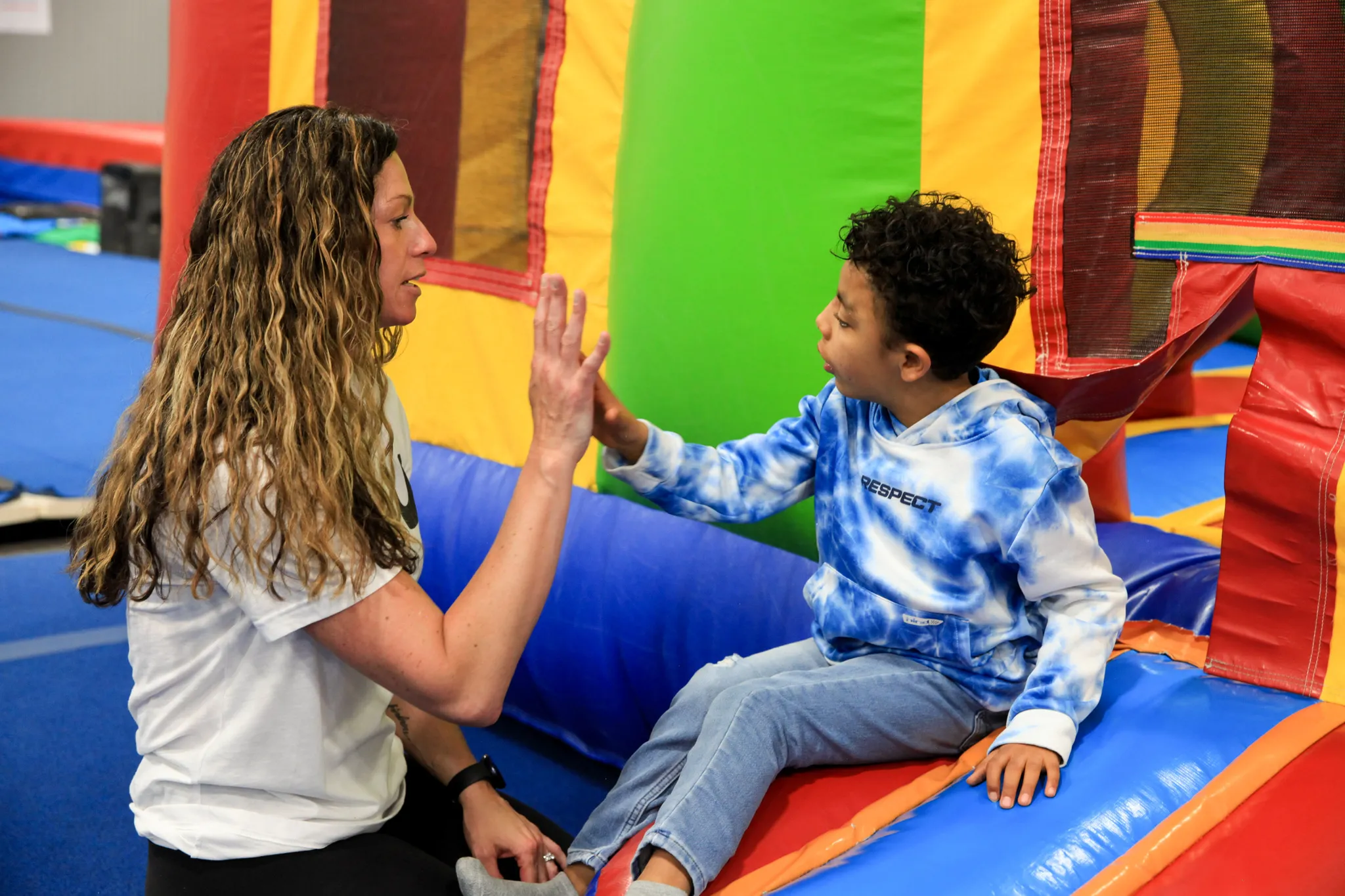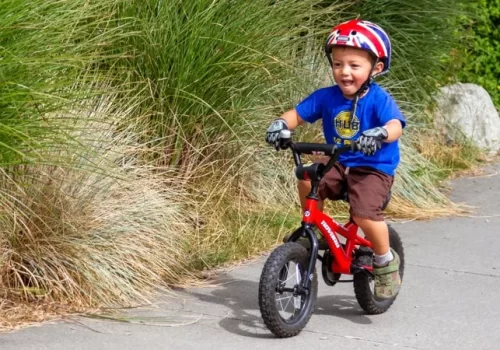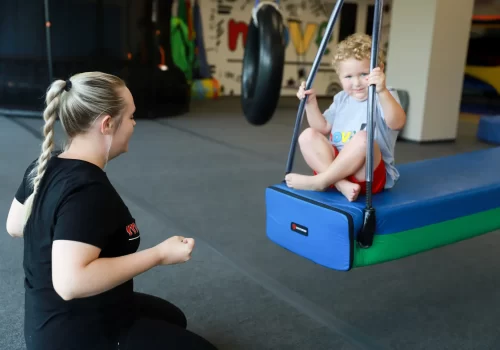Performing everyday grooming tasks can be challenging for children with sensory processing difficulties. With repeat exposure and sensory support, we can master a routine that works for accomplishing those daily grooming routines but what about the tasks that are not routine? One example of this that I often hear is a struggle from parents is their child’s ability to tolerate getting their haircut. Not because their child is afraid of receiving a bad haircut, but because of the overwhelming and uncomfortable sensory experience that comes with it. However, we have a variety of sensory tips for haircuts to help you out the next time you visit the hair salon.
Getting a haircut can be a sensory overload experience for children with sensory processing challenges that can lead to a variety of maladaptive responses. This could include screaming, kicking, throwing, inability to remain seated, refusal to walk into salon, or even shutting down completely. These behaviors can be frustrating and confusing leaving parents at a loss on what the problem is and how to fix it. So, let’s break down what getting a haircut is like to someone with sensory processing challenges to better understand what exactly is so challenging with a seemingly simple and non-threating experience.
Tactile (Touch) Sensations
- Sensitive to touch can translate to sensitivity with touch to our scalps either through touch from hands or brushes, combs, clippers/scissors, and even water
- Water or shampoo ono the face can be alerting for a child
- Hair falling on the face or body
- Air being blow the face/heads from a hairdryer
- Most touch experiences with getting a haircut involve unpredictable touch which can evoke increased anxiety as compared to predictable or expected touch
Olfactory (Smell) Sensations
- Hair product smells being used on them as well as the general aroma that comes with a hair salon
Visual (Sight) Sensations
- Hair salons generally have bright lighting
- Close proximity with the hair stylist (which is probably someone the child does not know well)
- A lot of objects or tools are brought close to the child’s face and eyes
Auditory (Sounds) Sensations
- Sound of clippers/scissors cutting can be alerting or alarming, especially when it is close to a child’s face and head
- Fast and unpredictable spray of water from rinsing sinks
- Chairs moving, many people up and walking around, loud conversation
- Sound of hairdryers are loud and unpredictable
- Buzz of hair trimmers are unpredictable and potentially new sound experiences
Vestibular (Head position in space) Sensations
- Head position changes occur frequently including having a child’s head tilted backwards or forwards as well as side to side when having their hair cut, washed, or rinsed
- This can cause a child to feel uncomfortable or unsafe due to feeling unsteady when tipping their head
Other Sensory-Based Challenges
- Hair cutting experience demands a child to sit still for long periods of time which can be challenging and uncomfortable for someone with sensory seeking challenges
- Chairs that a child sits in for hair cutting can feel wobbly and the pumping of the chair up can be unsettling for a child with sensory sensitivities.
In conclusion, a haircut is more than just a haircut. It’s a rich, sensory experience that sporadically happens and can be very overwhelming for children who struggle with sensory processing challenges. If your child has a hard time tolerating a haircut, reach out to us for an appointment! We specialize in helping children overcome challenges exactly like this so it can be a more enjoyable experience for the next time.



